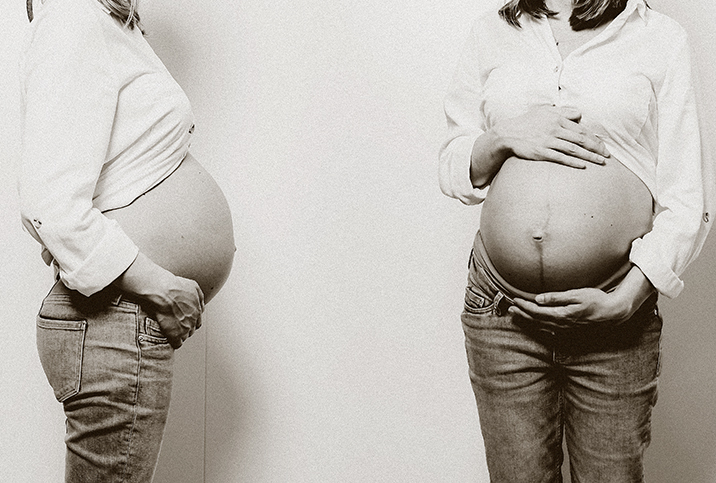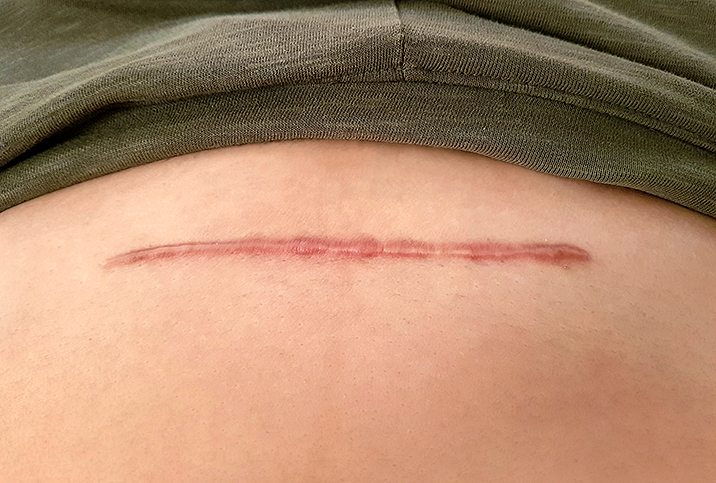Women With Fibroids Share Their Experiences of Getting Pregnant

Rochelle Markov is confident she will be able to successfully carry a fetus to full term after having a fibroid tumor the size of a peach removed earlier this month.
When Markov was first diagnosed in 2016 with the fibroid, which was growing in the cavity of her uterus, it was the size of a blueberry and wasn't causing any problems. Her troubles began in 2018, after she and her husband, Jason, decided to get pregnant.
"I had a miscarriage in April 2018," Markov told me. "Then, in November 2018, I had an ultrasound, which showed the fibroid was still there, although it was still very small. But by February 2021, I had another miscarriage."
Markov said she opted to undergo an open myomectomy in May 2021 to avoid a third miscarriage because a follow-up ultrasound showed the tumor had grown to about the size of a peach.
"It was like a C-section to remove the fibroid," Markov said in an interview. "It was growing rapidly, and this was basically the only remedy that seemed like it would be the most effective, versus hormone therapy or a catheter embolization where they put a device into the blood vessel, which cuts off the blood supply to the fibroid."
Markov is among the 77 percent of women of childbearing age who have benign uterine fibroid tumors, and her myomectomy was one of 30,000 that are performed every year to remove them, according to a Grand View Research report.
"I feel very lucky because there are other women who have them all over the place, and they cause such miseries," she said.
Up to 75 percent of fibroid cases are asymptomatic and unknown to the women who carry them. "Women who don't know they even have fibroids usually find out when they are pregnant," said Phyllis Frempong, an R.N. in Houston, Texas. "I've known women who have had successful natural births with fibroids and I know others who have miscarried. Where the fibroids are and their size play a huge role in regard to pregnancy, but women can have safe births, especially if the fibroids are located outside of the uterus."
Despite having four fibroids herself, Frempong, who is 37 years old, is hopeful she will one day give birth successfully and advises the clients she counsels who have fibroids to stay hopeful as well.
"Be in good health with your iron levels, endurance and physical health as far as body fat to decrease the risk and complications associated with pregnancy and childbirth with fibroids," Frempong advised.
Shirli Libet reports that she has given birth to three children despite having had a myomectomy when she was 26 years old to remove 16 fibroid tumors, six of which were 4 inches in size.
"It was 10 hours of surgery," Libet told me. "I had a special doctor who was in my wedding who removed the tumors. He told my husband and me that we had six months to get pregnant because the fibroid tumors are coming back."
The doctor's prediction was correct, and Libet had a hysterectomy at age 30 after giving birth via in vitro fertilization.
"When they remove the uterus, they just remove everything, and all the fibroids were in the myometrium for me," she said. "I thought my problem was over."
But some 10 years later, when Libet was 40, an X-ray revealed a recurrence in her lungs. "It is metastatic so it looks like thousands," she said. "My entire lungs are filled with them because when tumors are destructed, the cell sheds and it causes other problems for women. I also have a complex cyst in my kidneys."
Libet, who is now 44 years old, said she has since been informed by medical professionals that fibroid tumors are a result of genetics—in particular, the hereditary leiomyomatosis and renal cell cancer (HLRCC) gene, which can eventually lead to kidney cancer.
"I now have to do a follow-up MRI once a year because I have a 30 percent chance of getting cancer and there's no treatment, so the best way is early detection," Libet said. "Luckily, we found out the tumors in my lungs have not grown. So, everything is stable."
If you have or think you may have uterine fibroids, schedule an appointment with your doctor today to discuss diagnosis and treatment options.


















